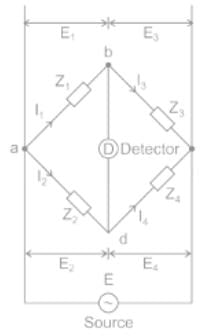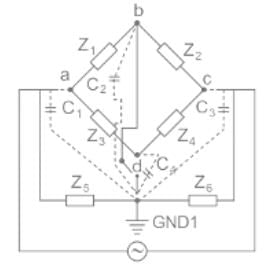Test: Measurement of Low Resistance - Electrical Engineering (EE) MCQ
10 Questions MCQ Test - Test: Measurement of Low Resistance
The bridge used for the measurement of the value of the capacitance is
In a Schering bridge, the dial of the variable capacitor is calibrated directly in terms of the dissipation factor of the unknown arm. At 50 Hz frequency, the value of the dissipation factor of the unknown capacitor was found to be D. What would be the value of the dissipation factor at 60 Hz
Dissipation factor of a capacitor can be measured with:
Which type of the bridge circuit among the following is used for measurement of capacitance?
The Schering bridge. one of the most important AC bridge
(A) It is used for capacitance measurement
(B) It is used for phase angle measurement
(C) It is used for inductance measurement
(D) It is used for resistance measurement
(E) It is used for torque measurement
Choose the correct answer from the options given below:
The bridge circuit shown can be used to measure unknown lossy capacitor Cx with resistance Rx. At balance:
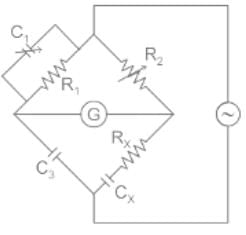
Which of the following is used to eliminate the effect of earth capacitances?
The bridge used to measure the dielectric loss of an insulator is
Which is not a source of error in the measurement of low resistance?


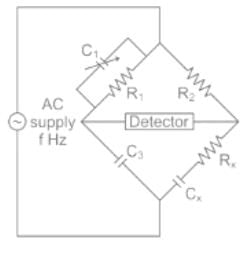
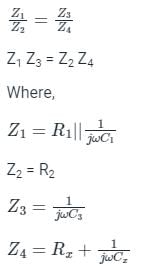

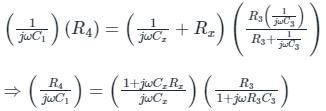
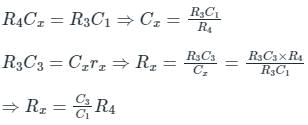

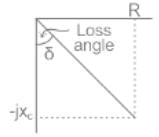

 =
=

